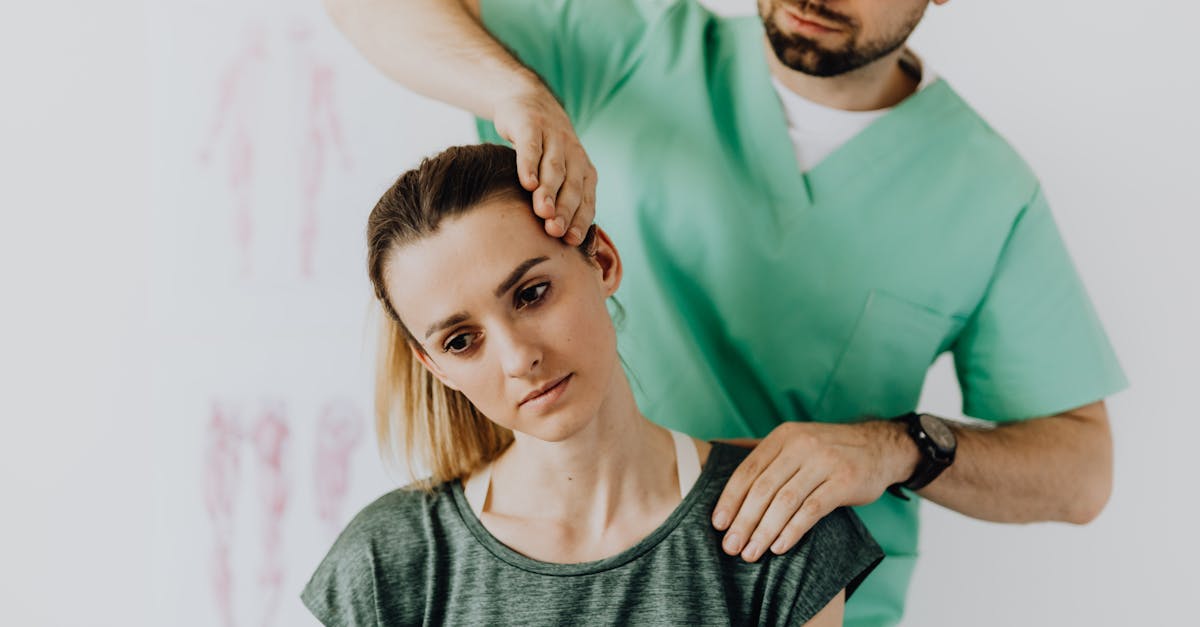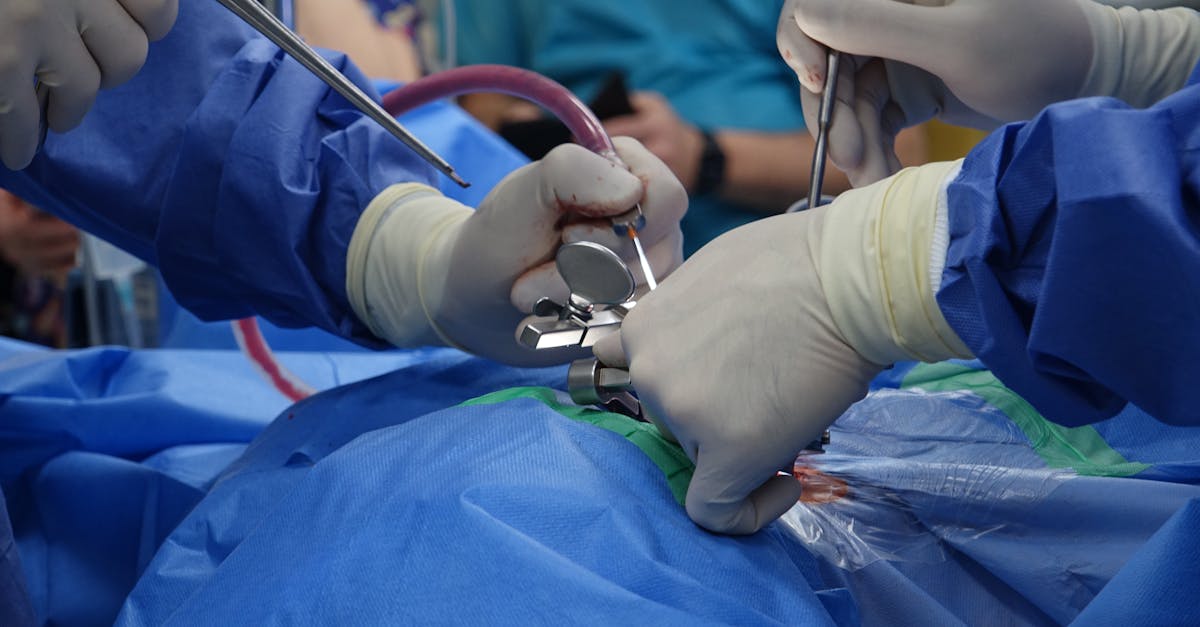|
In Short, understanding the rise of neck pain during winter months is essential for effectively managing discomfort associated with cold weather. This phenomenon encompasses various factors, including muscle constriction, dehydration, and poor posture, that collectively exacerbate existing neck issues. Recognizing these causes allows individuals to adopt proactive measures such as maintaining good hydration, engaging in appropriate physical activities, and practicing correct postures. By effectively addressing these underlying factors, sufferers can experience reduced tension and improved mobility throughout the winter season. |
Understanding the rise of neck pain during winter months is essential given the various environmental and physical factors at play. The cold weather often leads to muscle constriction, which can increase tension and discomfort in the neck area. Reduced mobility and poor posture during this season can further exacerbate existing issues. Additionally, winter illnesses contribute to overall body stress, leading to tightness and pain. Staying hydrated and proactively managing posture can help mitigate these discomforts during colder months.
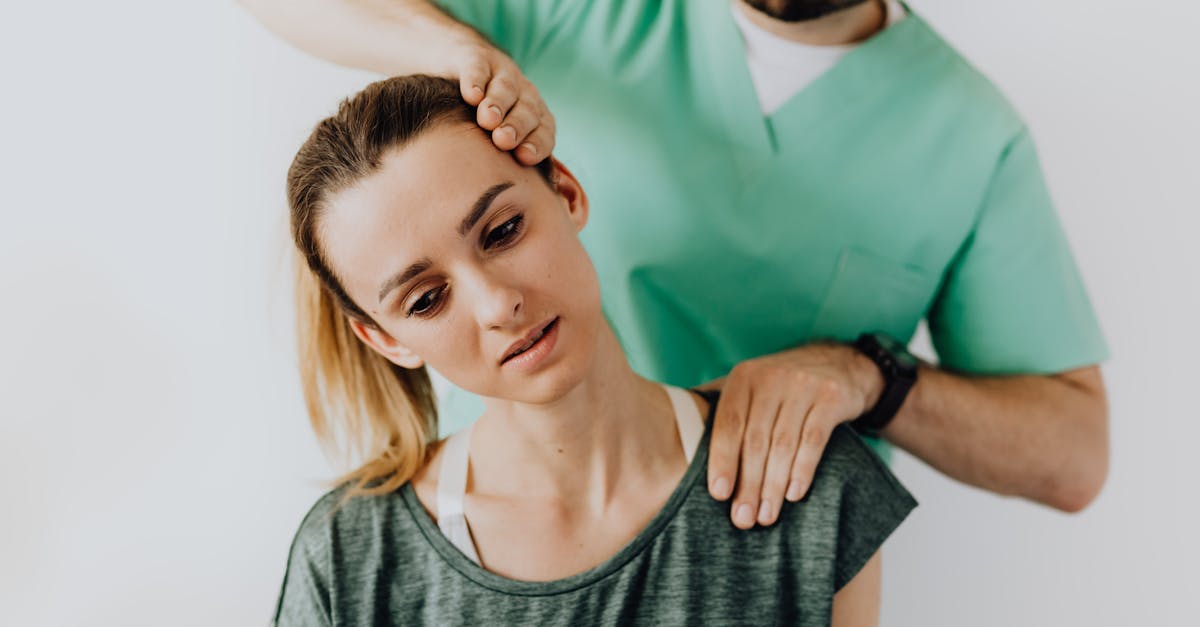
Welcome to Pulse Align: A Gentle Path to Well-Being
At Pulse Align, we pride ourselves on offering a non-invasive and innovative method to help restore the body’s natural balance and posture using gentle, imperceptible pulses. This approach not only promotes the body’s ability to achieve optimal function but also serves to enhance overall well-being. By supporting muscle tone symmetry, we aim to reduce certain tensions that might arise during daily activities, particularly in the winter months when discomfort in the neck and back can become more common.
Natural Recalibration for Enhanced Comfort
It’s crucial to understand that Pulse Align does not focus on alleviating discomfort directly or treating specific conditions. Instead, our priority is to support the body’s innate ability to recalibrate itself. Many clients find that this holistic perspective leads to natural improvements in comfort, often resulting in better posture and a greater sense of balance. Through this relaxing and gentle process, your body may discover relief simply by returning to its natural state.
A Personalized Journey Toward Wellness
Our approach is all about personalization and understanding the unique experiences of our clients. Many have shared inspiring stories of remarkable improvements in their overall well-being, particularly in neck and back tension, as well as achieving greater postural balance. Clients frequently express gratitude for how their journey with Pulse Align has contributed to a more comfortable and mobile lifestyle. Our friendly and inclusive environment encourages everyone, from children to pregnant women, to engage with our services and explore their wellness journey as a family.
Explore Pulse Align’s Services Today
Ready to take the next step? We invite you to visit the Pulse Align website to learn more about our services and find a location nearby. Clinics are available in La Prairie, Mont-Royal, Terrebonne, and several other cities. Book a consultation for yourself or your family today, and experience our safe, non-invasive, and family-friendly approach to enhancing your well-being. Remember, Pulse Align complements your existing healthcare services and supports your natural journey to feeling your best.
Medical Disclaimer
The information and advice provided on this site do not replace the advice, diagnosis, or treatment of a healthcare professional. Please note that the author of this article is neither a doctor nor a specialist in a medical specialty as defined by the Collège des médecins du Québec. Manual medicine, functional medicine, and sports medicine as described on this site exclude any medical treatment or diagnosis made by a doctor or medical specialist. Always consult your doctor for any medical questions. For more details, please read our complete Legal Notice.
- Cold Temperatures: Lead to increased muscle constriction.
- Illness: Higher incidence of winter colds can cause muscle tension.
- Reduced Movement: Cold weather encourages sedentary behavior.
- Dehydration: Lower water intake can result in muscle stiffness.
- Poor Posture: Bundling up can lead to misalignment and strain.
- Activity Levels: Increased winter sports can strain the neck muscles.
- Sleep Issues: Cold drafts can cause uncomfortable sleeping positions.
- Stress: Seasonal stress can exacerbate muscle tension.
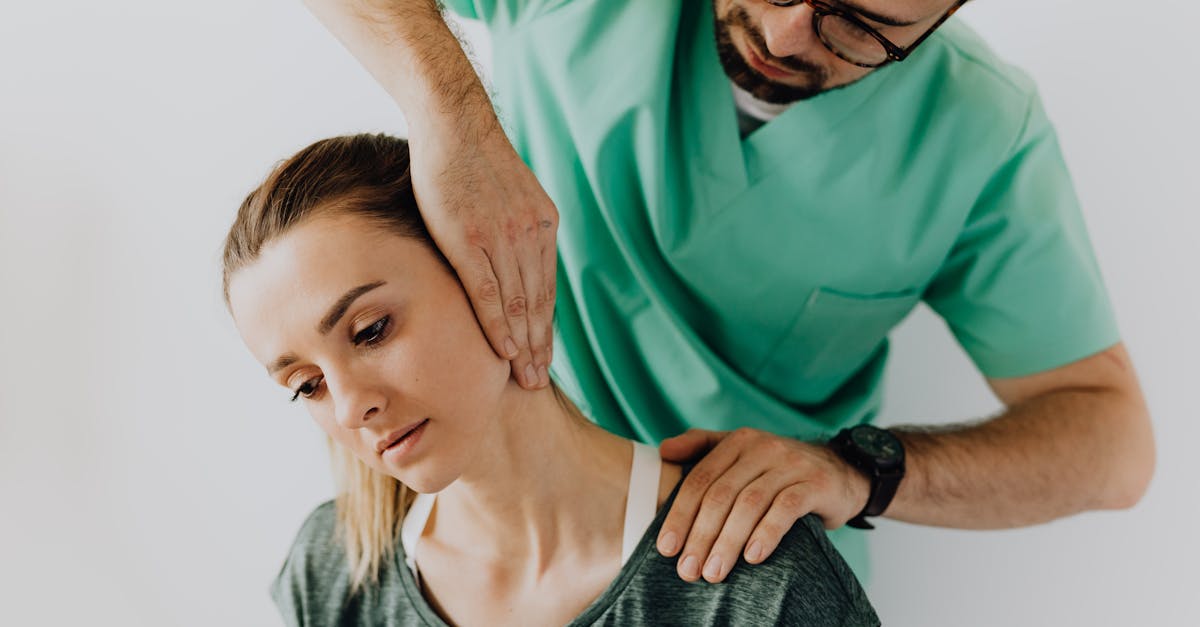
The colder months often bring with them a rise in neck pain and discomfort for many individuals. This increase in pain levels can be attributed to a combination of environmental, physical, and lifestyle factors, all of which intertwine to create optimal conditions for exacerbating existing issues. From muscle constriction to poor posture, understanding these leading causes can empower individuals to adopt effective strategies for relief and prevention.
The Influence of Cold Weather
As winter sets in, the drop in temperatures significantly affects how our bodies respond. The cold triggers muscle constriction, which is the body’s instinctive reaction to preserve heat. This tightening of muscles particularly impacts the neck and shoulder areas, leading to increased tension and discomfort. Moreover, reduced blood flow accompanies these colder temperatures, which can deprive the muscles and nerves in the neck of crucial nutrients and oxygen, exacerbating pain and stiffness.
Illness and Its Impact
Winter is also synonymous with an uptick in seasonal illnesses like colds and flu. These ailments can strain the body, leading to an increase in overall tension, which may specifically contribute to neck pain. When people fall sick, they tend to remain less active, leading to muscle stiffness and less mobility. This underlines the importance of remaining conscious of how general well-being can influence neck health during these months.
Postural Challenges
With the colder weather often comes a shift in how we carry ourselves, leading to poor posture as individuals bundle up to stay warm. Hunching over or holding awkward positions can place undue stress on the neck, leading to chronic pain. Extended periods spent indoors, such as working in front of a computer, exacerbate these problems. Maintaining an awareness of posture while sitting or standing is critical to alleviating discomfort, particularly in winter when individuals may neglect proper alignment.
Physical Inactivity
Another contributor to increased neck pain during the winter is reduced physical activity. Cold weather often makes outdoor exercise less appealing, leading to prolonged periods of inactivity. This lack of movement can result in decreased muscle flexibility and joint stiffness, which can further heighten discomfort levels. Incorporating simple stretching and mobility exercises can be paramount in combating the pain often associated with inactivity.
Hydration and Its Role
Interestingly, many individuals forget to drink sufficient water during winter months, contributing to dehydration. This reduction in hydration can lead to muscle stiffness and discomfort. Ensuring proper hydration not only supports overall health but also plays a vital role in preventing neck pain throughout colder seasons. Making a conscious effort to stay hydrated can have profound effects on muscle health and flexibility.
Maintaining a Holistic Approach to Wellness
Understanding the multifaceted nature of neck pain during the winter allows individuals to adopt a more proactive stance. An awareness of how environmental conditions affect our bodies prompts necessary adjustments in daily routines. Prioritizing hydration, maintaining good posture, and staying active are essential strategies in preventing winter-related discomfort. Aligning with the principles of Pulse Align, which emphasize neuromuscular health, achieving symmetry, and recalibrating the nervous system, can create an empowering environment for recovery and wellness.
| Factors Contributing to Neck Pain | Wellness Focus |
|---|---|
| Cold Weather | Encourages awareness and adaptation of body’s natural warmth management. |
| Muscle Constriction | Promotes the importance of gentle activation for muscle relaxation. |
| Reduced Mobility | Encourages regular movement to sustain flexibility and balance. |
| Hydration Levels | Highlights the role of proper hydration in maintaining overall muscle health. |
| Poor Posture | Stresses the need for mindfulness in alignment during indoor activities. |
| Increased Illness | Encourages supportive practices for resilience and recovery during illness. |
| Winter Sports | Advocates safe practices that align with the body’s natural strength. |
| Sleep Patterns | Promotes comfortable sleep environments that support natural alignment. |
| Stress and Tension | Encourages relaxation techniques to promote overall wellness. |
| Social Behavior Changes | Advocates for communal activities that support joyful movement and connection. |
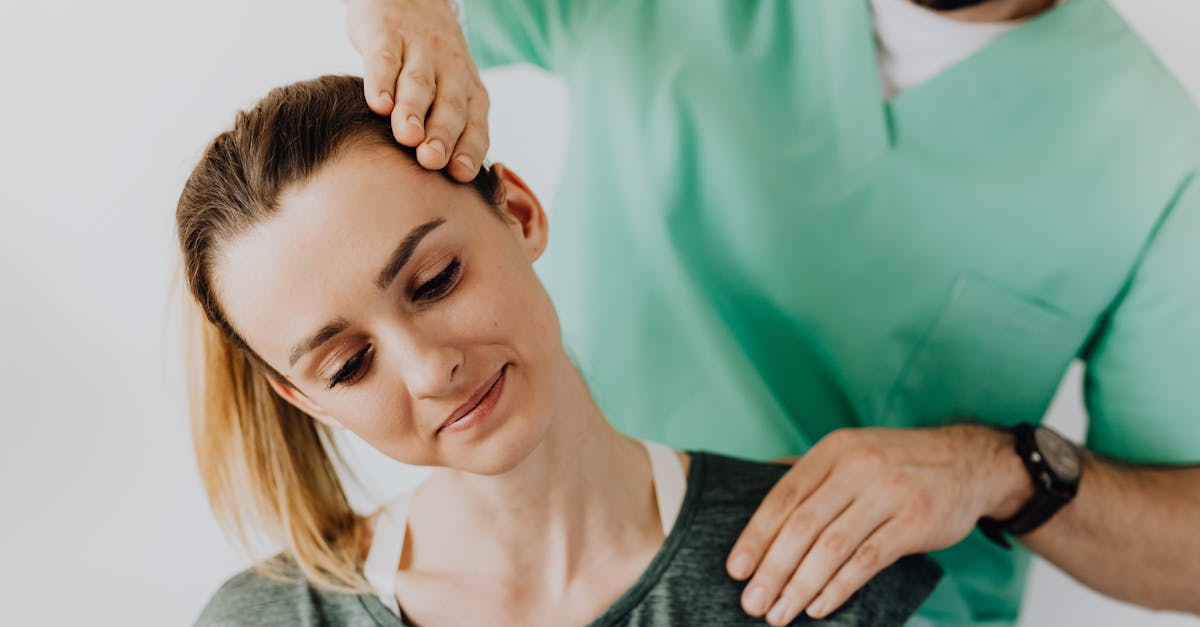
Client Testimonials: Embracing Wellness Through Natural Recovery
Clients across various regions have begun to share their heartwarming journeys toward wellness, particularly during the challenging winter months when neck pain can become more pronounced. Many have found solace in Pulse Align’s unique approach, which emphasizes the body’s natural ability to recalibrate and restore balance. This method has led to remarkable improvements in their daily lives.
In La Prairie, one client expressed, “I was initially skeptical of holistic treatments, but since starting at Pulse Align, I have felt a meaningful shift in my neck discomfort. The gentle techniques have really helped my body find a new level of comfort, which I didn’t think was possible during the winter.” Such sentiments reflect the sentiments of many who have benefited during this season.
In Mont-Royal, another client stated, “My neck pain was often worse in the colder months, but after working with the team at Pulse Align, I feel much stronger and more aligned. The support I received not only helped with my neck but also improved my overall sense of well-being.” Clients appreciate how the service promotes a comprehensive approach to health.
Additionally, in Terrebonne, a family shared their experience, saying, “We all struggled with neck stiffness during winter, but since integrating Pulse Align into our wellness routine, we’ve noticed considerable improvements. The focus on natural healing methods felt fantastic and genuinely complemented our healthcare plans.” The positive feedback from families highlights the inclusive and supportive environment Pulse Align fosters.
In areas like Saint-Jérôme and Châteauguay, many clients have found value in Pulse Align’s services as a crucial part of their health strategy. “The techniques we learned have been invaluable for my family—especially during the colder months. We now approach winter with a sense of preparedness thanks to our partnership with Pulse Align,” shared a satisfied customer.
Our commitment to working alongside healthcare teams reinforces that Pulse Align is here to support clients and their families on their unique wellness journeys. If you reside in areas such as Deux-Montagnes, Sainte-Marie, or even as far as Chicoutimi, you will discover how our services can help enhance your body function and overall well-being.
To learn more about how Pulse Align can benefit your health, please visit our Our Clinics page for locations near you. Experience the transformative journey that so many satisfied clients have already embraced; the key to better neck health could be just a visit away!
As winter descends upon us, a noticeable increase in neck pain becomes evident for many individuals. The cold weather often compels people to adapt their habits, and this change can have significant implications for musculoskeletal health, particularly in the neck region. Understanding the factors that contribute to this seasonal trend is essential for individuals seeking to maintain their comfort and mobility during these colder months.
One primary factor behind the rise in neck pain during winter is muscle contraction due to the drop in temperature. When exposed to cold, the human body instinctively tightens its muscles as a warming mechanism. This contraction can lead to increased tension and stiffness, particularly around the neck and shoulder areas. It’s crucial to recognize that this physiological response can exacerbate pre-existing neck issues, making discomfort more pronounced.
In addition to muscle tightening, the tendency to hunch or adopt poor posture for warmth while bundled up in layers can further contribute to neck pain. As people navigate cold weather, many may find themselves in awkward positions when trying to stay warm, especially in their living or working environments. This suboptimal alignment places additional strain on the neck, leading to discomfort over time. Correcting posture and making conscious adjustments to how one sits, stands, or moves can provide essential relief.
Another significant factor in the exacerbation of neck pain during winter is the increase in sedentary behavior. When the weather becomes uninviting, many individuals tend to stay indoors and reduce their physical activity levels. Prolonged periods of inactivity can lead to decreased muscle flexibility and stiffness in the joints. Regular movement and exercise are vital in maintaining muscle health and preventing stiffness. Engaging in light activity, such as gentle stretching or specific neck exercises, becomes crucial during the winter months to mitigate discomfort.
The impact of seasonal illnesses should also not be underestimated when discussing neck pain’s rise in winter. Conditions such as the common cold or influenza often leave individuals feeling weak and fatigued, increasing the likelihood of adopting poor body mechanics while resting or recuperating. The stress on the body from dealing with these illnesses can lead to additional strain on the neck, therefore heightening discomfort.
Dr. Sylvain Desforges is an acclaimed expert in osteopathy, naturopathy, and manual medicine, known for his innovative approach within the healthcare sector. As the founding president of TAGMED clinics and the ACMA association, he has dedicated his career to chronic pain management and has pioneered advanced technologies such as spinal decompression, laser, and shockwave therapy. Dr. Desforges focuses on providing evidence-based care that allows his patients to optimize their health and well-being.
At the TAGMED clinics located in regions such as Montréal, Terrebonne, and Mont-Royal, an emphasis is placed on addressing the various causes of neck pain, especially during winter. The community has access to a range of therapeutic services tailored to help alleviate discomfort and enhance quality of life. By educating individuals about the importance of maintaining good posture, staying active, and recognizing the interplay between external factors and personal health, Dr. Desforges aims to empower patients on their journey toward recovery.
Ultimately, by understanding the relationship between winter conditions and neck pain, individuals can take proactive measures to manage their discomfort and ensure a healthier, more active winter season.
Neurovertebral Decompression Technology by TAGMED
Mechanism of Action
The neurovertebral decompression technology offered by TAGMED operates by applying a controlled and progressive traction force to the spine. This innovative technique effectively increases the space between the vertebrae, alleviating pressure on both the intervertebral discs and the nerve roots. Through this process, improved circulation of fluids within the targeted area occurs, which significantly contributes to the reduction of inflammation and relief from pain. By creating more room around the affected structures, the body is better equipped to heal and regain its functional capabilities.
Specific Benefits
This non-invasive method of treatment is particularly effective in relieving chronic pain and symptoms associated with conditions such as herniated discs, disc bulges, and moderate to severe spinal stenosis. The reduction in pressure exerted on the nerve structures, along with the optimization of fluid circulation around the discs, creates a conducive environment for recovery. Patients often experience fewer instances of pain and discomfort, contributing to a marked improvement in their overall quality of life. The holistic approach adopted by TAGMED focuses on empowering the body’s innate ability to heal, fostering resilience and a return to everyday activities without invasive procedures.
Comparison with Other Treatments
When contrasting TAGMED’s neurovertebral decompression technology with other commonly utilized therapeutic approaches—such as pain medications, corticosteroid injections, surgery, or traditional physical therapy—several key advantages are evident. Traditional treatments often involve invasive procedures or can lead to potential side effects that may complicate recovery. In contrast, TAGMED’s non-invasive technique minimizes the hazards associated with pharmacological treatments and generally allows for a quicker recovery timeframe. Patients typically find themselves returning to their daily routines much sooner than with conventional methods, highlighting the unique efficacy of this cutting-edge approach.
Case Studies and Testimonials
Numerous patients have reported significant improvements following treatments with TAGMED’s neurovertebral decompression technology. For instance, a patient dealing with chronic neck discomfort and intermittent headaches shared that after just a few sessions, they experienced a lasting reduction in pain. Another patient noted that they could drastically reduce their reliance on pain medications after undergoing therapy, enabling them to engage more robustly in their activities without fear of aggravating their condition. These real-world enhancements underscore the efficacy of this innovative approach in managing chronic pain and associated symptoms during the challenging winter months.
As winter descends, the dip in temperature presents myriad challenges for individuals, notably the escalation of neck pain. This discomfort can be attributed to multiple intertwined factors that coalesce during the colder months. One primary culprit is the body’s natural muscle constriction, a response to cold that negatively impacts flexibility and creates heightened tension around the neck area.
Moreover, reduced physical activity during this season contributes to stiffness and pain. As outdoor conditions become less inviting, many opt for sedentary habits, leading to joint stiffness and muscle tightness. This inactivity often exacerbates any pre-existing neck issues, underscoring the importance of incorporating simple stretches and movements despite the chill.
Dehydration is another often-overlooked factor that plays a significant role in neck discomfort. During winter, individuals frequently neglect their hydration needs, contributing to muscle stiffness. Proper hydration is essential for maintaining muscle elasticity and joint lubrication, both critical for minimizing neck pain.
Furthermore, environmental considerations such as poor posture and the increased prevalence of winter-related illnesses also exacerbate neck pain. Individuals often adopt suboptimal positions while bundled up indoors or working at home, leading to strain and discomfort over time. Additionally, winter illnesses can increase bodily tension and discomfort, further complicating the neck pain experience.
Recognizing these multifaceted causes of neck pain during the winter months can empower individuals to take proactive steps in alleviating their discomfort. Implementing strategies that promote good posture, regular physical activity, and adequate hydration can significantly improve neck health and overall well-being throughout the colder seasons.

Do you suffer from a chronic condition that responds little or not at all to conservative treatments?
As colder months approach, many clients experience an increase in discomfort around the neck and shoulder areas, driven by various environmental changes. At Pulse Align, we offer a non-invasive, innovative method that helps restore the body’s natural balance and posture through gentle, imperceptible pulses. This unique approach supports the body’s intrinsic ability to recalibrate, which can lead to a natural reduction in muscle and joint tension, ultimately addressing the common challenges faced during the winter season.
Importantly, Pulse Align does not directly address discomfort or specific conditions, but rather focuses on empowering the body to recalibrate itself naturally. Many clients report remarkable improvements in their overall comfort and posture as they engage with our gentle methods. This process fosters an environment where clients can thrive and feel more aligned, reflecting the unique capabilities of their bodies as they move through the colder months.
At Pulse Align, our approach is personalized to meet the unique needs of each client. Testimonial feedback often highlights notable improvements in tension levels and overall well-being after experiencing our services. Clients have shared stories of enhanced comfort in their everyday activities and a greater sense of balance and harmony in their lives. This collective shift embodies the transformative potential we aim to cultivate at Pulse Align, as clients witness their bodies responding positively through our holistic framework.
We invite you to explore the possibilities available at Pulse Align by visiting our website to learn more, find a location near you—including cities such as La Prairie, Mont-Royal, and Terrebonne—and book a consultation for yourself or your family. It’s essential to clarify that while Pulse Align complements the ongoing support of healthcare services, our methods serve as an enhancement to overall well-being rather than a direct replacement. Our gentle, non-invasive approach is suitable for the entire family, including young children and pregnant women, allowing everyone to embark on their personal wellness journey in a safe and supportive environment.
To discover how Pulse Align can play a role in your wellness journey and help you regain a sense of balance, visit our website: Pulse Align. Book an appointment online today!
Frequently Asked Questions
Neck Pain
What is chronic neck pain?
It’s neck pain lasting more than three months, often related to mechanical, postural, or degenerative issues.
Can neck pain cause headaches?
Yes, tension in the neck muscles can radiate and trigger tension-type headaches.
Is yoga good for neck pain?
Yes, yoga improves flexibility, posture, and relaxation, helping to prevent and relieve neck pain.
Do strengthening exercises help?
Yes, strengthening the neck and shoulder muscles can stabilize the cervical region and reduce pain.
Is Pilates recommended?
Yes, Pilates strengthens deep muscles and improves posture, helping to reduce neck pain.
Are heated cervical collars useful?
Yes, they combine support and warmth, providing temporary relief.
Do regular breaks at work reduce neck pain?
Yes, pausing to stand, stretch, and readjust posture decreases accumulated tension.
Is whiplash a common neck injury?
Car accidents often cause whiplash, resulting in neck pain and stiffness.
Can I prevent neck pain?
Yes, by maintaining good posture, strengthening neck muscles, reducing stress, and adjusting workplace ergonomics.
When should I see a doctor for neck pain?
If the pain lasts more than a few weeks, comes with dizziness, arm tingling, or severe headaches, seek medical help.
Sophie Gambert understands that neck pain is far more than a physical ache—it’s a roadblock to living the life you love. As a Neck Pain Awareness Advocate at Pulse Align, she is committed to shedding light on the underlying causes, sharing practical relief strategies, and offering genuine support to readers seeking to reclaim their freedom of movement. With a warm, empathetic voice and a keen eye for the latest in pain management research, Sophie leads conversations that uplift, educate, and inspire. She believes that every individual deserves to feel heard, understood, and guided toward healing, one step at a time.
Medical Disclaimer
The information and advice provided on this site do not replace the advice, diagnosis, or treatment of a healthcare professional. Please note that the author of this article is neither a doctor nor a specialist in a medical specialty as defined by the Collège des médecins du Québec. Manual medicine, functional medicine, and sports medicine as described on this site exclude any medical treatment or diagnosis made by a doctor or medical specialist. Always consult your doctor for any medical questions. For more details, please read our complete Legal Notice.

